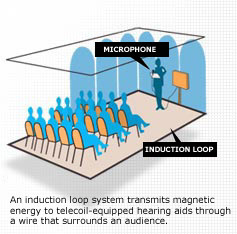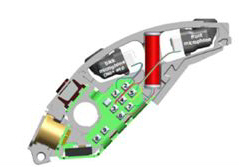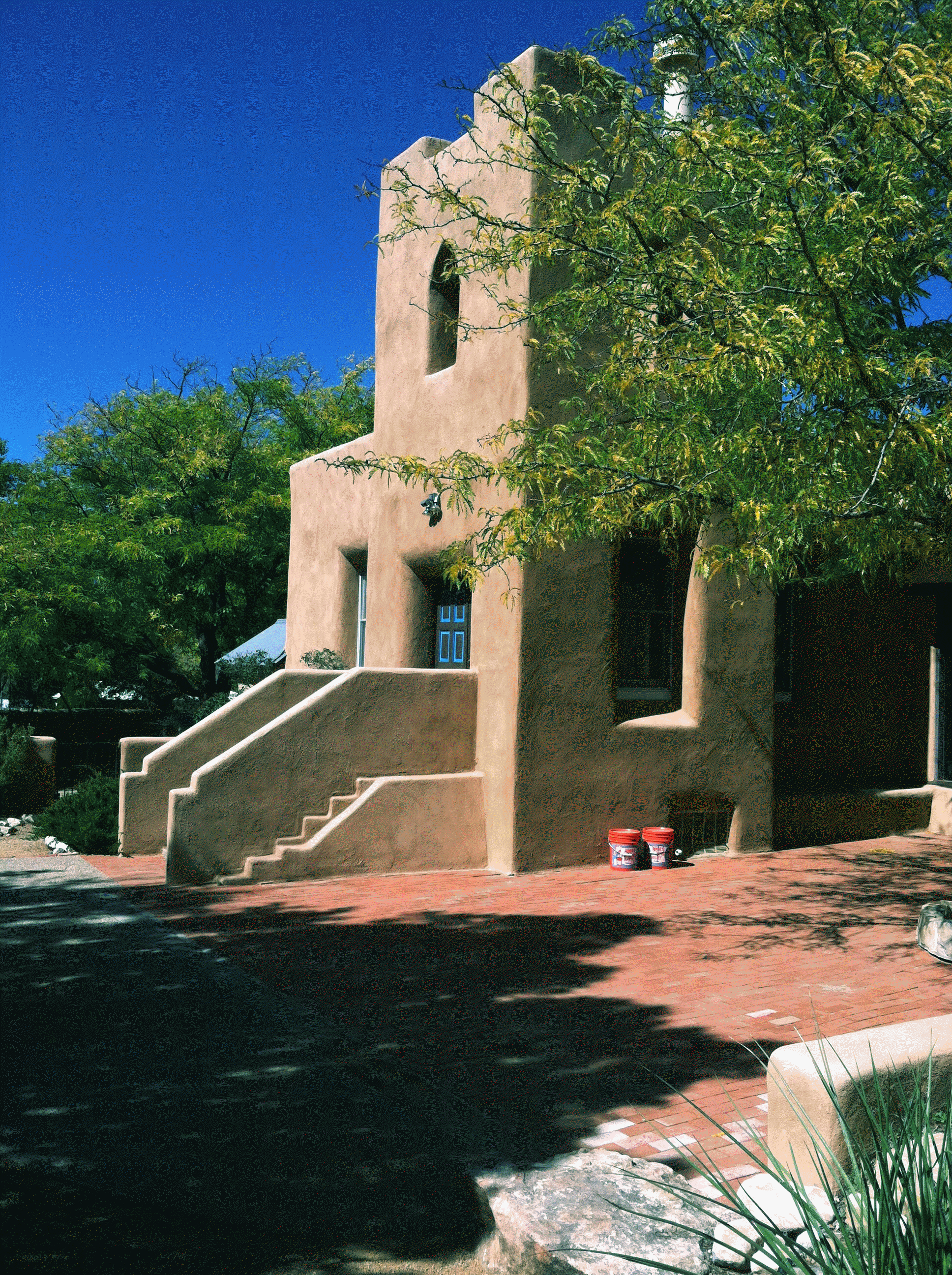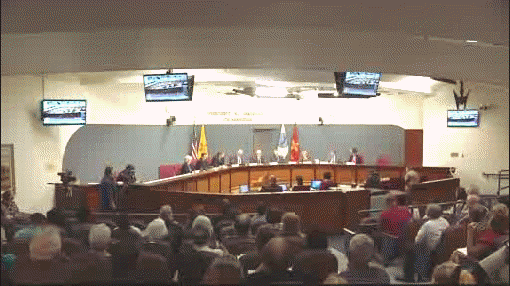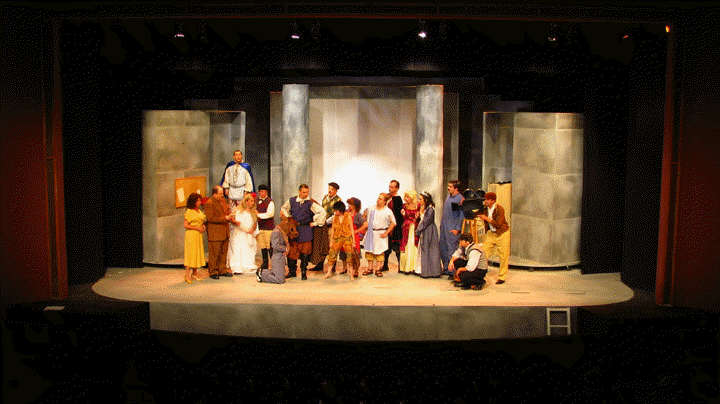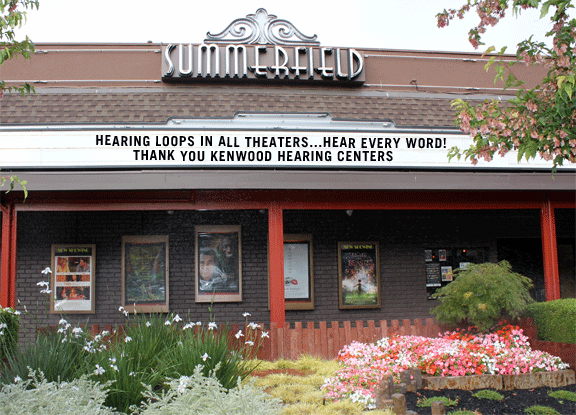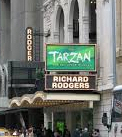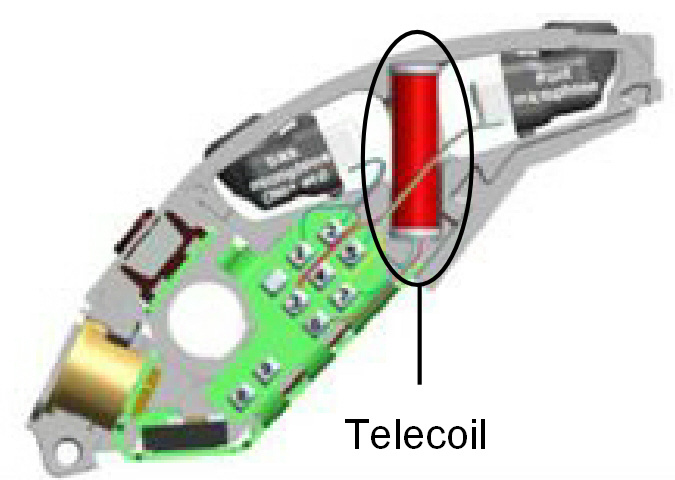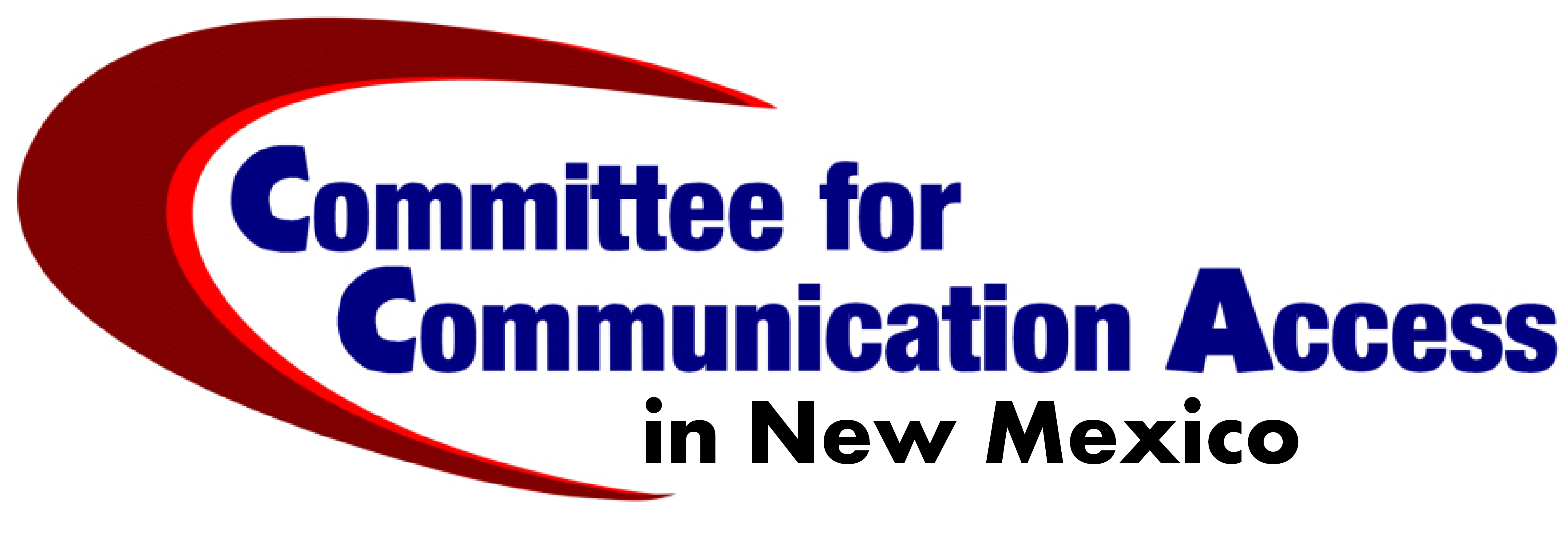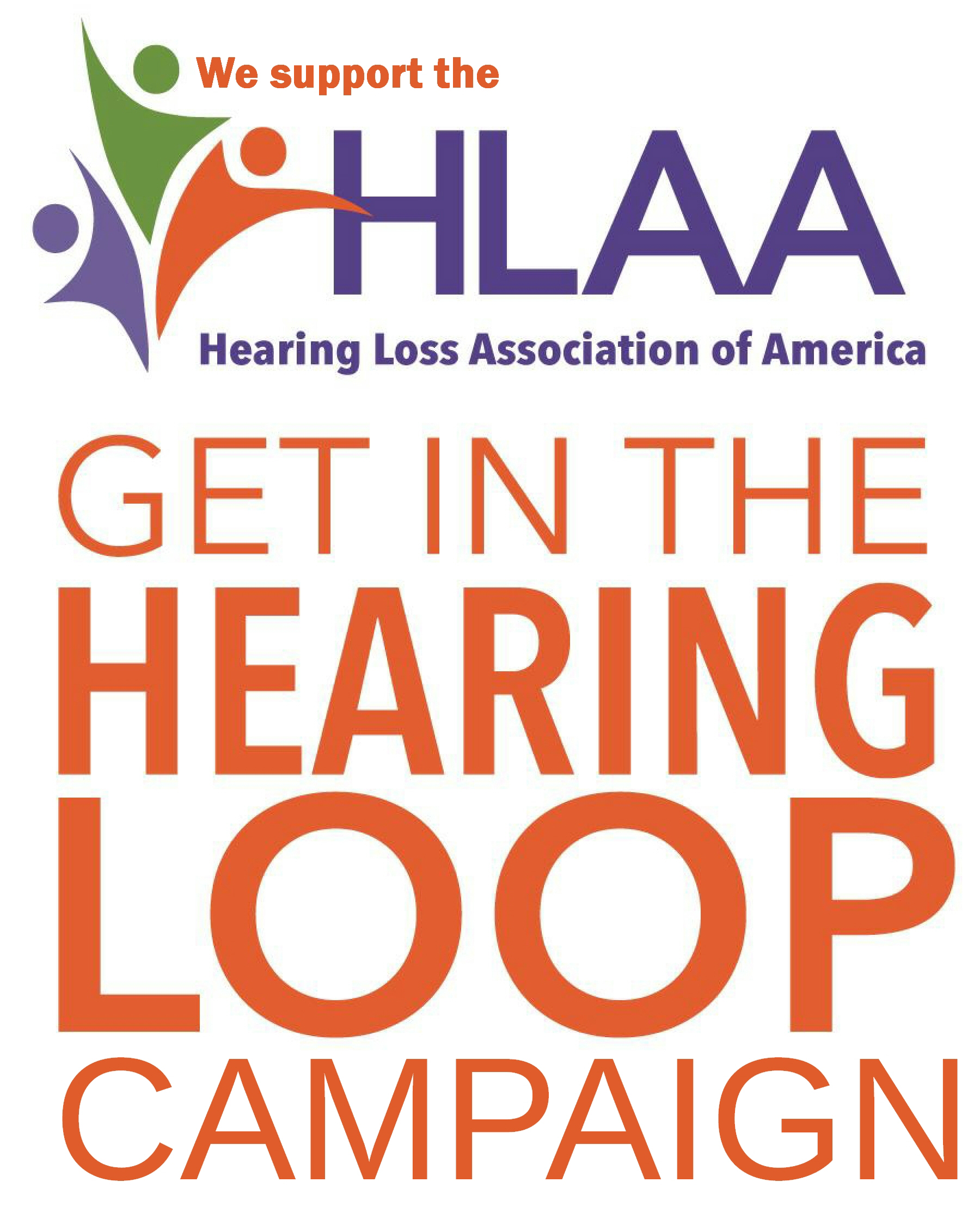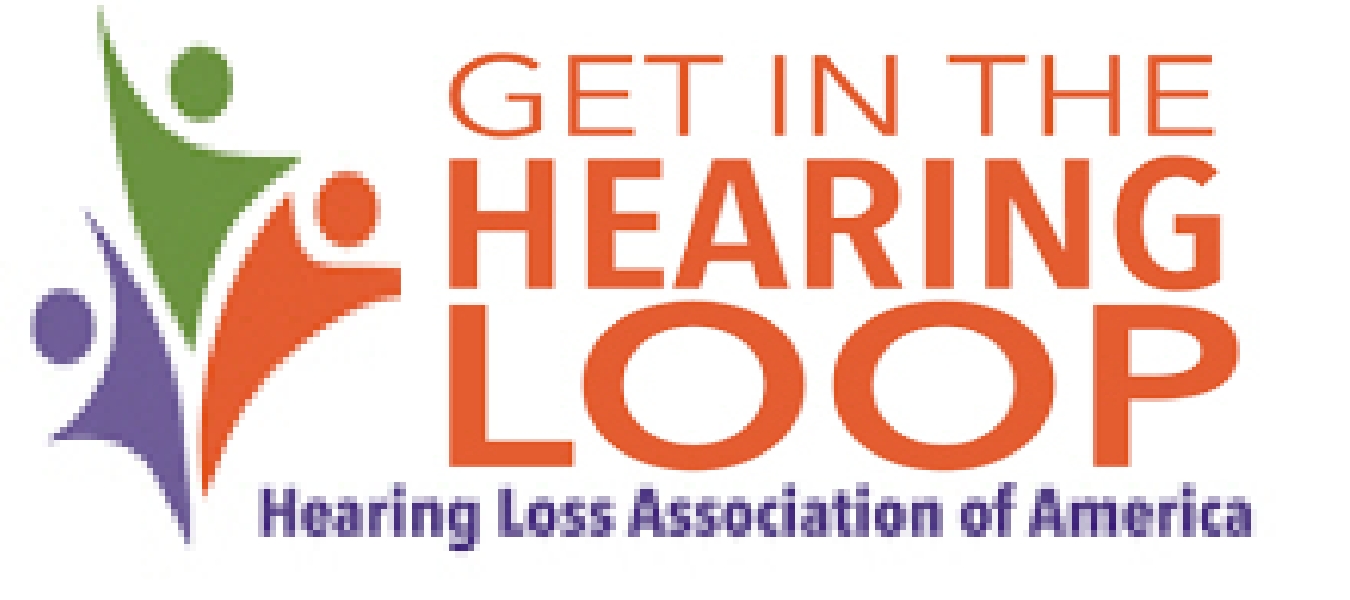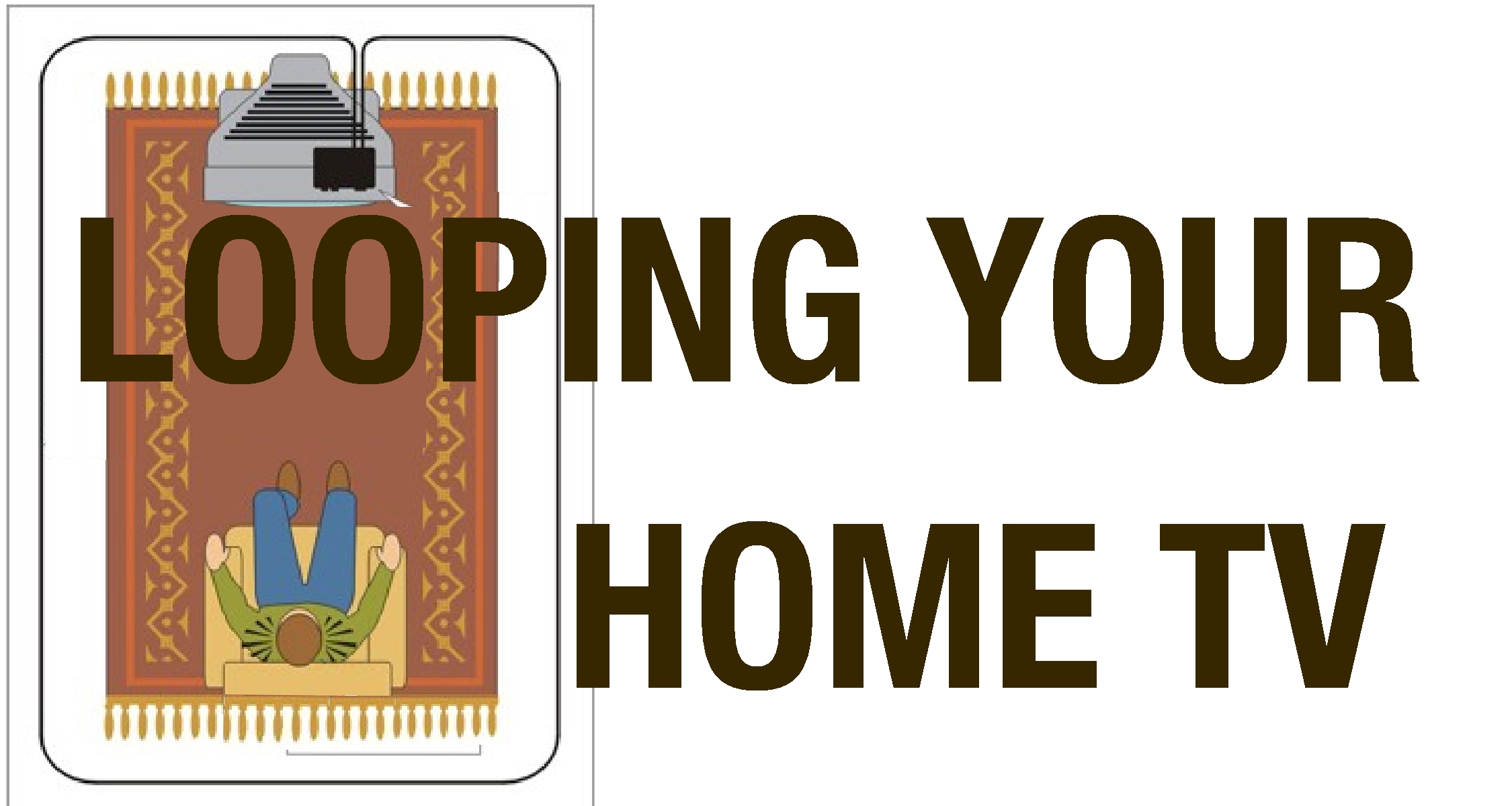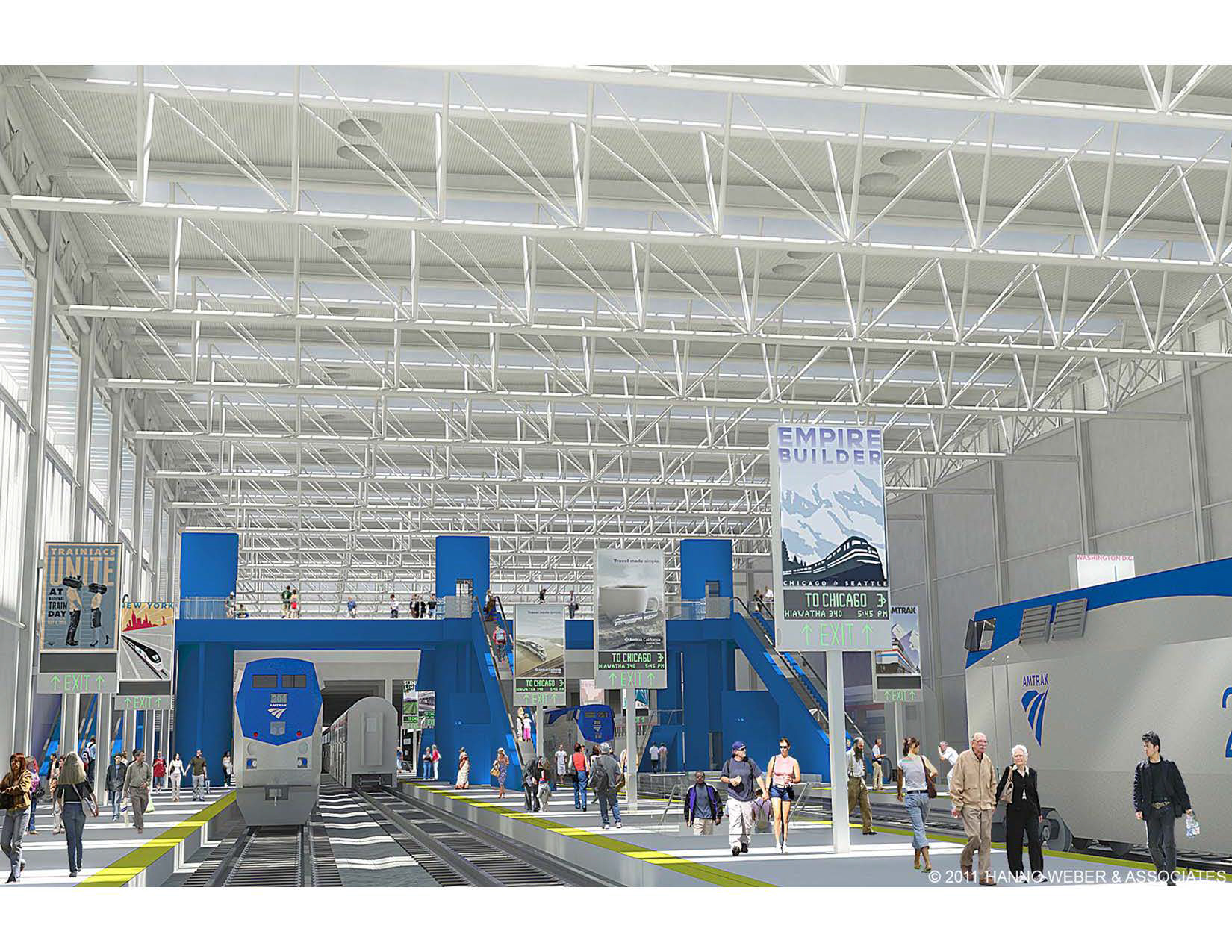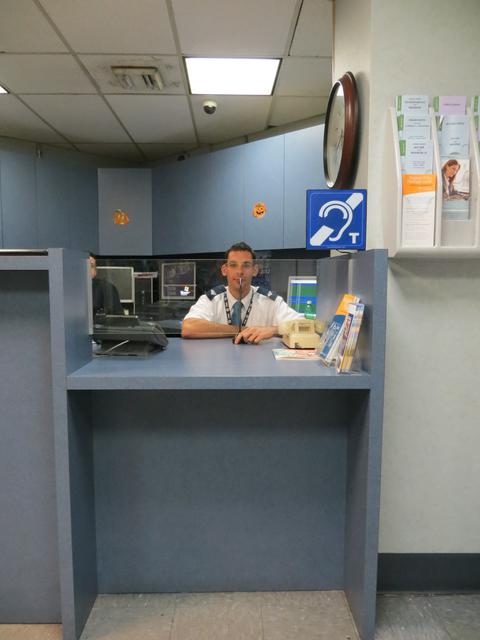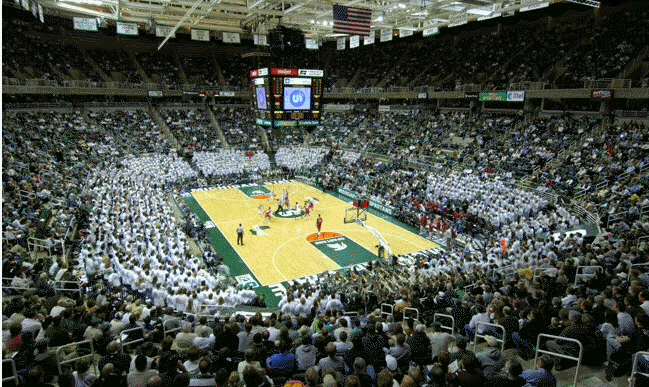 | ||||||
WHAT IS A TELECOIL?
A telecoil is a small copper coil of wire that can be found in over 70% of all hearing aids currently available and in all new cochlear implants. When turned on it receives an electromagnetic signal from a hearing loop and sends it
through the digital circuitry of the hearing device where it becomes
sound. This process, in effect, places the mouth of the person
speaking right at the listener's ear, providing dramatically improved
clarity and inteligability right at the listener's ear,
 | ||||||
 | ||||||
BENEFITS OF HEARING LOOPS OVER OTHER SYSTEMS
If they use the combination Mic/Telecoil setting on their hearing aids they can still hear and talk with others while connected to the loop - something that's difficult to
do when wearing a headsetwhen wearing a headset - or they can go strictly to the
telecoil setting (turning off the hearing aid microphones) thus eliminating most
background noise and reverberation.
The headset or ear buds loaned with an FM or IR ALS are really just miniature loudspeakers placed over or in your ears. They cannot customize sound to match your audiogram whereas digital hearing aids and CIs are miniature computers that customize the sound so that those frequencies you don't hear well get more amplification thus making words clearer and easier to identify. This is particularly important for those with a higher frequency hearing loss which makes it difficult to hear consonants.
WHERE WILL I FIND HEARING LOOPS IN USE?
The majority of hearing loops are currently to be found in places of worship and you can
find a list of know New Mexico looped churches such as Las Placitas Presbyterian
Church shown here by using this link.Other examples are the Albuquerque City
Council/Bernalillo County Commission chamber or the Albuquerque
Little Theatre and numerous other places among the over 140 venues of various types throughout the state that feature hearing loop technology of some sort in their public address system and the list is growing longer every month.
NATIONAL PRESENCE OF LOOPS
Hearing loops can now be found in churches nationwide and in such diverse locations as New York City subway information booths and Broadway theatres. A growing number of airports and other transportation hubs are installing the technology as are supermarket and drug store chains.
Some small, independent movie theaters like this one in California have
looped each of the auditoriums while large chains like Cinemark are now
loaning earphones or neckloops with FM receivers.
Transportation hubs like this IntermodalStation in
Milwaukee have installed hearing loop technology
at various locationsl throughout the complex while
Amtrak information booths and ticket counters have
been looped in New York's Grand Central and Pen
stations and at Union Station in Washington, DC.
The Richard Rogers Theatre on
New York's Great White Way is just one of hundreds
of performing arts halls around the country that that
now feature hearing loops and the 12,000 seat Breslin
Center at Michigan State University has all 12,000 of
those seats looped so the hard of hearing can hear
above the roar of the crowd.
There are several web sites that contain lists of known loop installations
throughout the country. Among them are those of Loop America and
As you can see, America is taking notice of the movement to Get in the Hearing Loop.
 | ||||||
WHY ARE ASSISTIVE LISTENING SYSTEMS NECESSARY?
The higher the frequency of a sound the less strength that sound has thus shortening the distance it can travel and still be heard This is particularly problematic to the hard of hearing, most of whom have a higher frequency hearing loss. The effective range of hearing aid microphones is only about six to eight feet and once sound is coming from a distance greater than that those microphones will have difficulty picking it up.
The loudspeakers of most public address systems are not set to provide extra amplification to higher frequencies and users would find that sound unpleasant if they were, but that's the added amplification the hard of hearing need if they are to be able to understand the sounds they are hearing as words.
No matter how high the volume on the loudspeakers is set, hard of hearing listeners will still have difficulty hearing the higher frequency sounds as they will be "covered" by the louder, stronger, lower frequency sounds and they will thus have difficulty understanding the words being broadcast. An assistive listening system places the sound right at the user's ear via earphones, ear buds or the telecoils in hearing aids thus compensating for the weaker high frequency sounds to some degree.
 | ||||||
 | ||||||
Website Designed by Stephen Frazier © 2016 at Homestead™
 | ||||||
A hearing loop is a type of assistive listening system used to silently transmit sound to the hard of hearing via electromagnetic waves that are received by tiny antennas called telecoils. Such systems are now required in most public venues that feature a public address system.
In its simplest form a hearing loop is an insulated wire loop that surrounds a seating area. The loop is connected to an amplifier and microphone and it transmits a silent electro-magnetic signal to the telecoils found in most hearing aids or cochlear implants that those devices turn into sound. Users without telecoil equipped hearing aids or CIs are provided with a receiver that contains a telecoil and a headset or ear buds to hear the proceedings.
A hearing loop assistive listening system (ALS) allows those with telecoil equipped hearing aids and CIs to access the system with the simple touch of a button - no need to borrow a receiver and headset and then return it after the event. They need not remove their hearing aids so there's no chance that their hearing aids might be damaged or lost when removed to don the headset.
 | ||||||
CONSUMER SURVEYS
The Committee for Communication Access in New Mexico (CCAnm) on which Loop New Mexico is represented, has conducted two surveys dealing with hearing loss issues and technology. To review the surveys, click on the link following the name of the survey below:
Assistive Listening System User Survey ................
Telecoil Counseling Survey ......................................
 | ||||||
A CLEARINGHOUSE FOR INFORMATION ON HEARING LOOPS
LoopNM@gmail.com l (505) 401-4195 l 9807 Loretta Drive NW, Albuquerque, NM 87114
Residents and visitors to New Mexico deserve to have the necessary communication tools and technology to fully experience and participate in the joys offered by the Land of Enchantment. Chief among those tools are the hearing loop and the telecoil. Loop New Mexico is a clearinghouse for information on this time tested and ADA compliant technology that wirelessly connects hearing aids and cochlear implants to audio devices, doubling the functionality of hearing aids. We provide documents, slide presentations, referrals, advice and otherwise assist inquirers in our joint efforts to raise awareness and availability of hearing loops throughout the state.
WHAT IS A HEARING LOOP?
T

